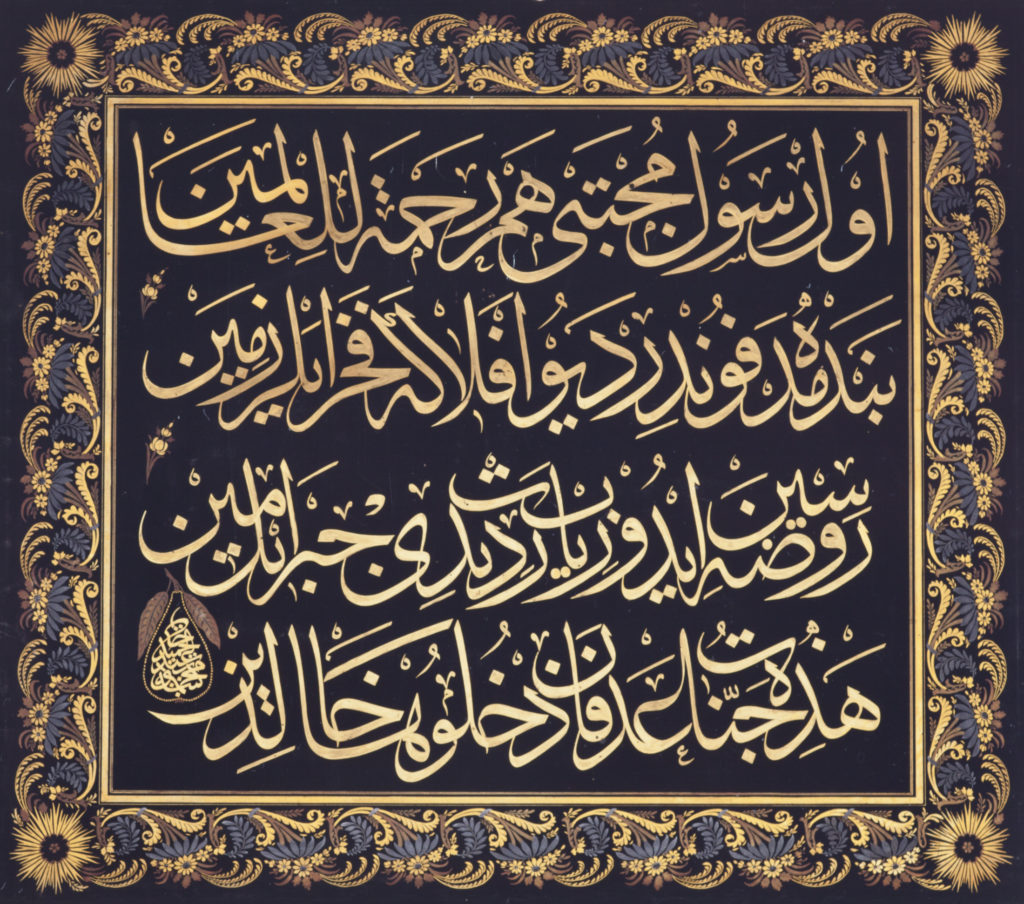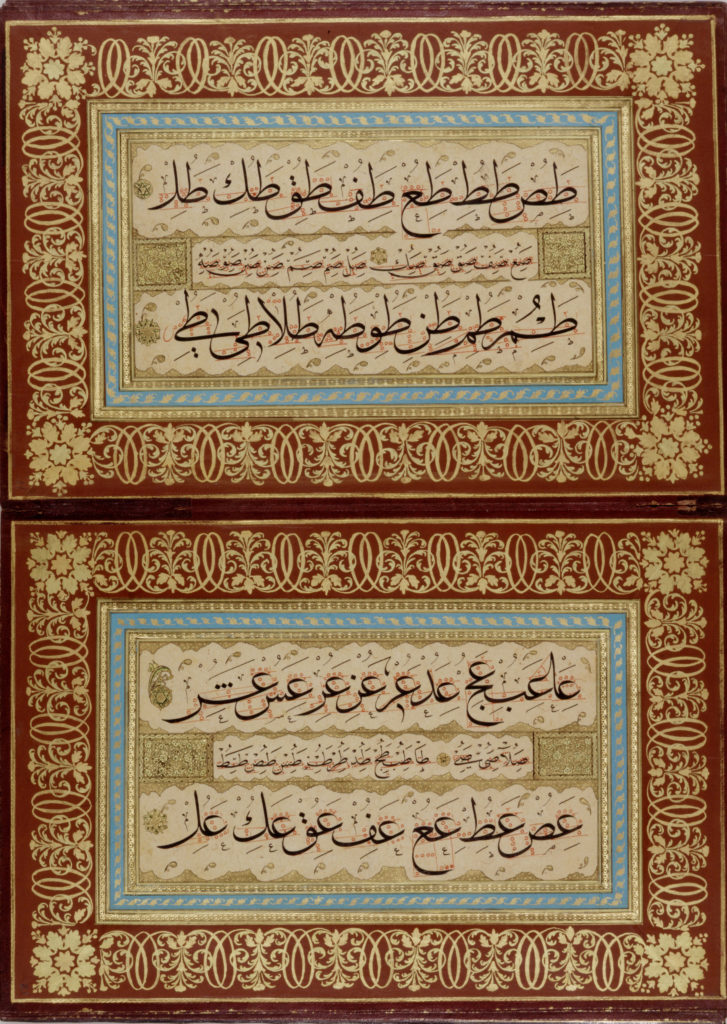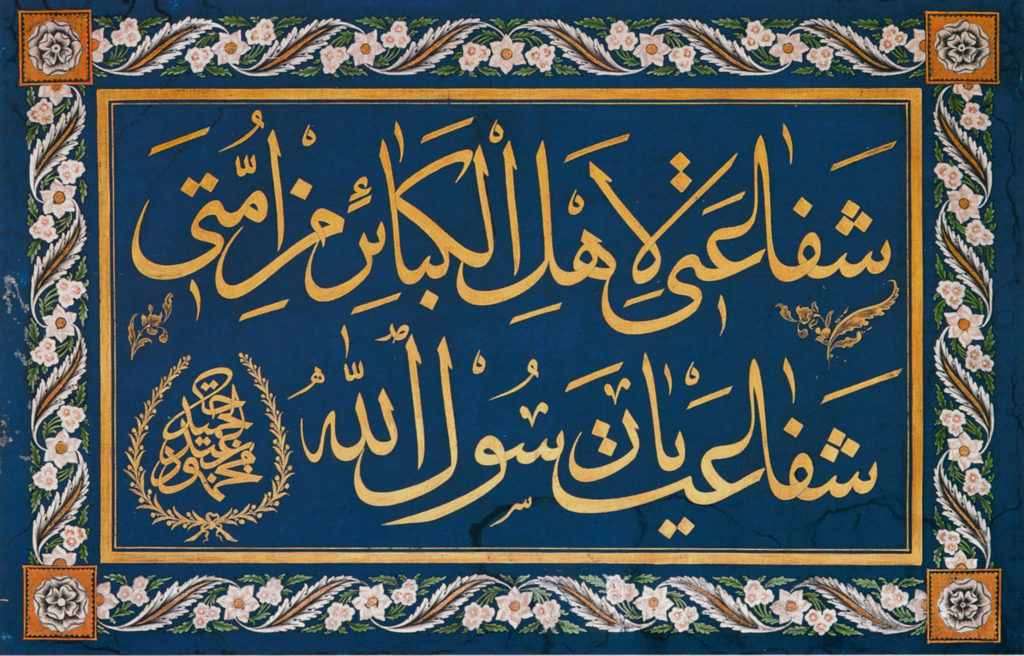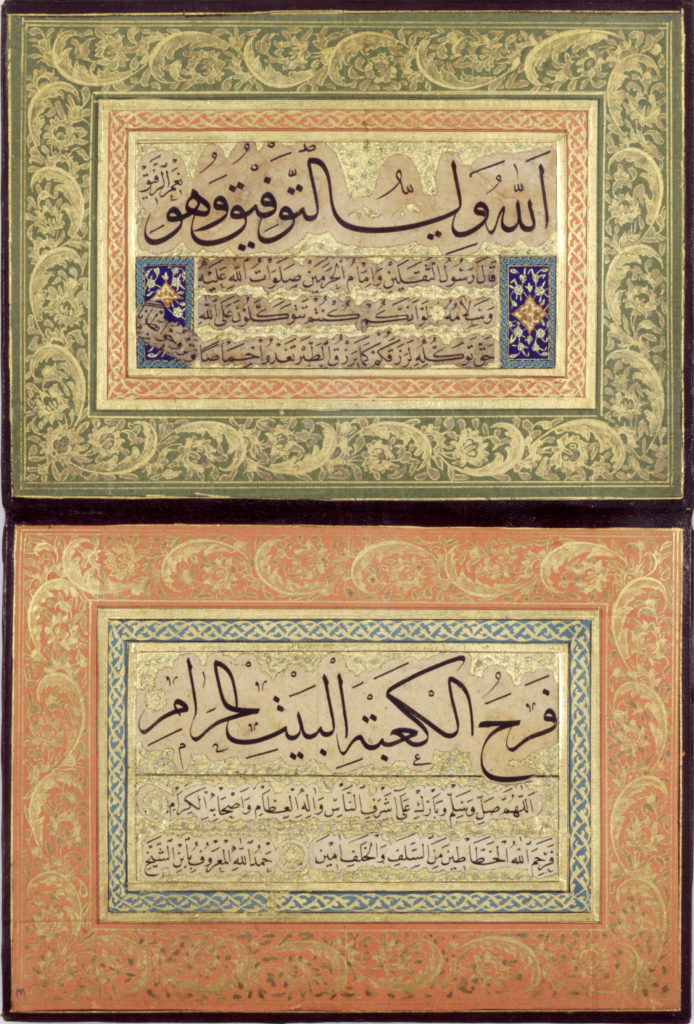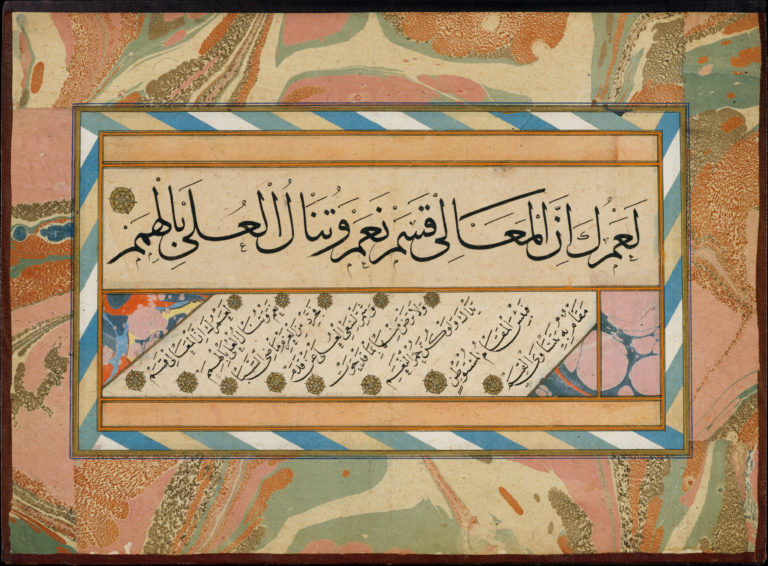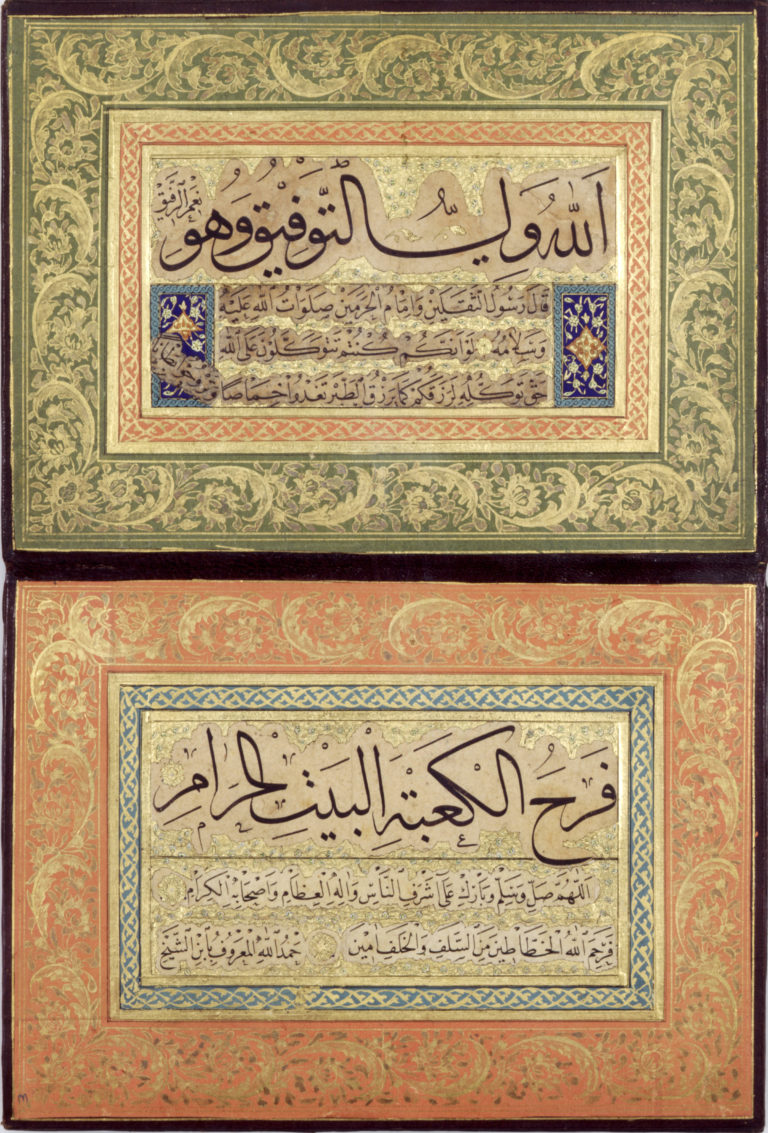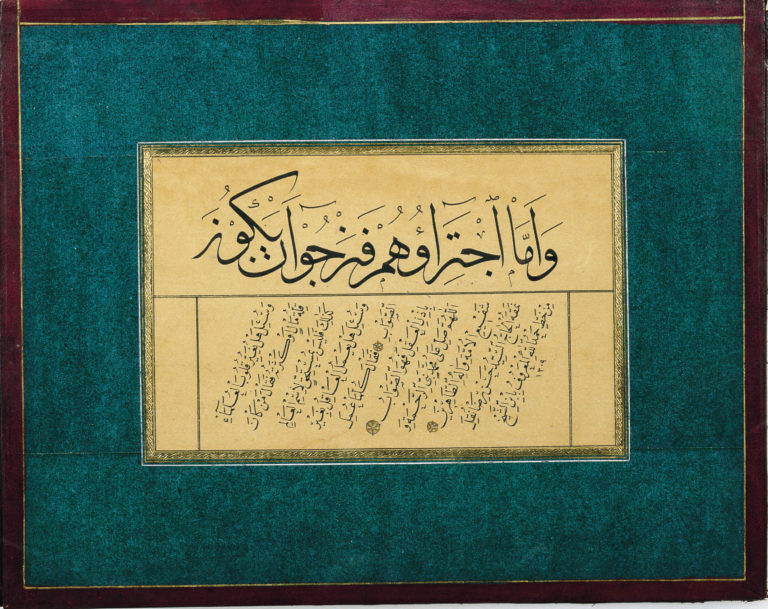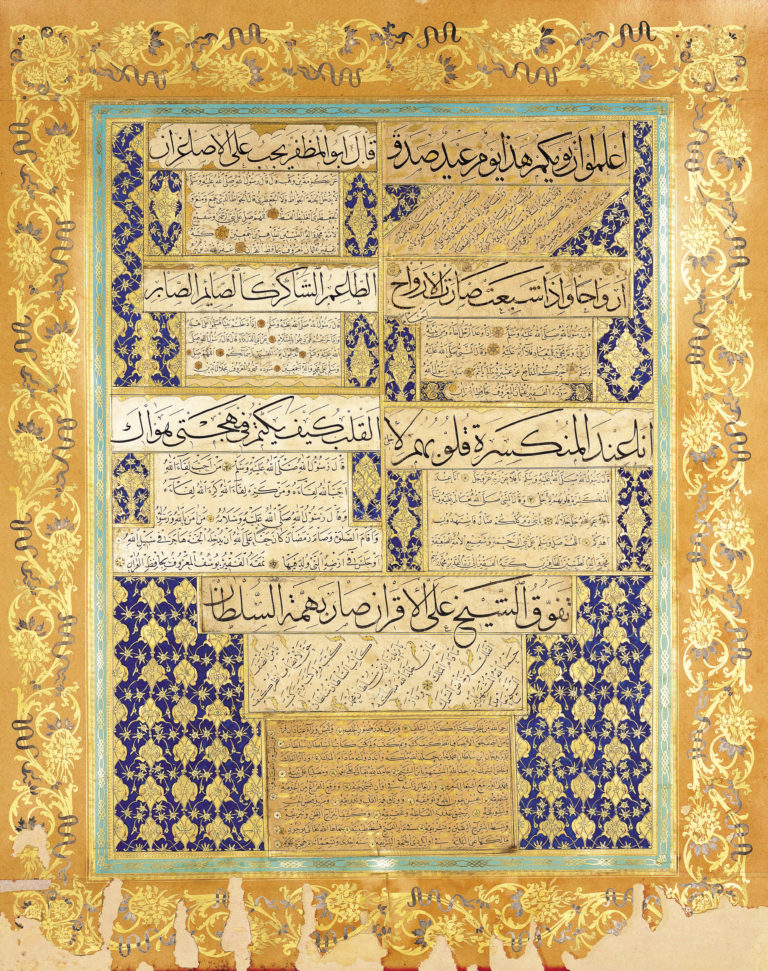Thuluth
(Pronounced “thoo-looth”; Turkish–Sulus)
Meaning
- “Thuluth” means “one-third.” This possibly refers to its pen size (one-third the size of the pen used for a larger script called tumar)
Uses
- Script par excellence for writing many different kinds of texts
- Used particulary for titles and architectural inscriptions
Companion script
- Thuluth is most often written in conjunction with naskh. Naskh, however, is not based on the Thuluth script, it is merely a smaller companion script
Timeline
- Developed in the 10th century
- Refined by Seyh Hamdullah in the 15th century
- Still in use today
Distinctive characteristics
- Vertical strokes have a leftward slant, horizontals have a deep curve
- The ends of most descending letters come up in a hook
- Often written so the letters interlace
- Many alternate letter forms exist in this script
Notes
- Thuluth is often considered the most powerful and versatile script. Some experts say you are not a calligrapher until you can write thuluth.
